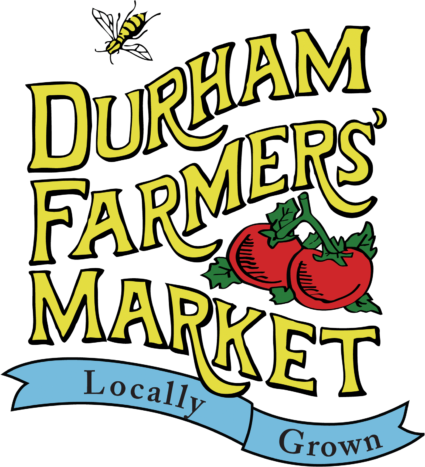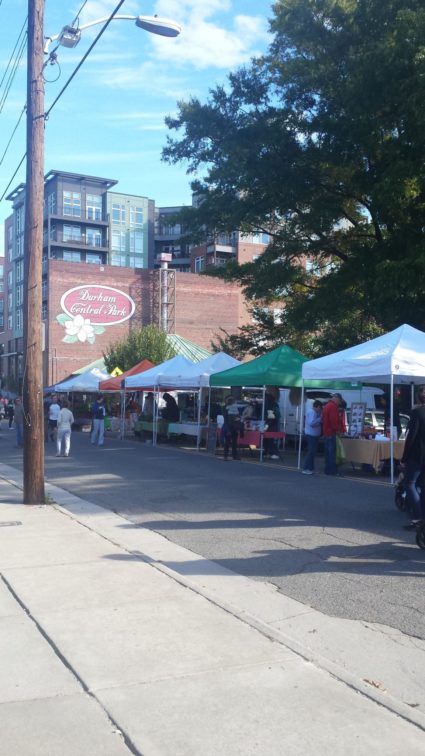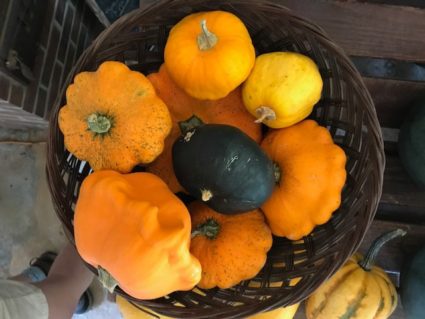How Carefully Crafted Market Rules Supported a Market's Development
The Durham Farmers Market (DFM) is composed of local farmers and craftspeople. Eligible vendors must reside and produce items to be sold within a 70 mile radius of Durham city limits, in the state of North Carolina. New member applications are accepted once per year.
 The Durham Farmers Market Official Rules contain:
The Durham Farmers Market Official Rules contain:
- Definitions of each category of vendor
- Market member (i.e., vendor) qualifications
- Market operation details
- Market member responsibilities
- Application process details
- Market member space allocations
- Market Manager role specifications
- Complaint process
- Eligible market products and definitions of categories
- Appendices:
- Transition Plans for Market Member Businesses
- Guest Vending

Photo Credit: Shannon Arata
The Durham Farmers Market began operations in 1998. Initially, the market modeled its rules on those of the nearby and long-running Carrboro Farmers Market, hoping that farmers at the Carrboro market would also vend at the Durham market. Those vendors were instrumental in developing the DFM rules. They largely tracked the Carrboro rules, but Durham expanded the Carrboro production mileage radius (70 miles versus 50) to attract fruit and nut vendors located south of Durham.
Carrboro’s rules state that the owner of the business or a family member has to be there on market day; Durham decided not to adopt that rule because many Carrboro vendors were also founding vendors of the Durham Farmers Market and would not be able to attend both. The Durham Farmers Market does have many owner-farmers present on market day but the vendors who attend the Carrboro Farmers Market usually send employees to Durham.
Keeping Rules Current
The rules are updated as needed. In 2016 the market reviewed and updated its rules, assisted by a volunteer attorney who is a regular market shopper. Once the board approved the rule changes, they presented them at a March 2017 meeting to the vendor members. In 2017, the board began considering updating rules regarding prepared foods and craft vending.

Photo Credit: Michelle Nowlin
Market leadership is prioritizing food safety concerns in their rule updates, but acknowledges that it is challenging to add new food handling rules for existing vendors. The local USDA Cooperative Extension office suggested market-level management of all food sampling, which the market is considering. As with most markets, the responsibility for following city- and state-level requirements for food preparation is currently on the vendors directly.
Key takeaways
- Pay attention to local context. Taking stock of the rules from a local market helped DFM create rules that local vendors would find familiar and that would not conflict with vendors’ responsibilities to existing markets.
- Recognize the value in revisiting market rules as the market (and relevant law) evolves. Regularly revisiting their market rules helps DFM ensure that they are relevant to current market needs. It also keeps people aware of what the current rules are, which can prevent inadvertent rule violations. (For more information on market rules and procedures, click here.)
- Retain records of rule development. Keeping track of how and why market rules were chosen can help future generations of market leaders understand how the market has changed over time. It can give them valuable context for making decisions about the market. (For more information on recordkeeping of legacy documents, click here.)
